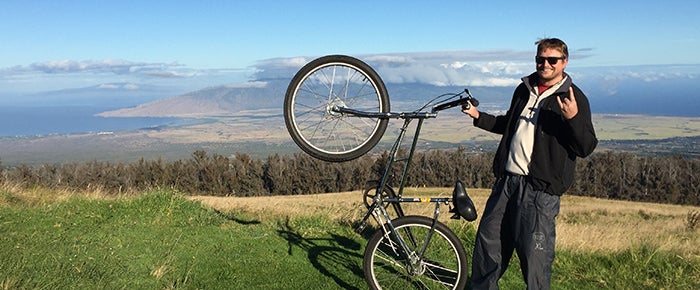Jacob Biehl, Associate Professor
COVID-19 has placed the onus on how people occupy space. Thinking beyond just where they go, the process now encompasses room size, occupancy, and cleanliness out of dire necessity. Big tech companies like Apple and Google are developing contact tracing technologies, which allow those who control the data to track who went where, when they went, and how long they were there. But what if someone can use that data in a way that compromises rights to privacy? Developing research can utilize sensing technologies that focus solely on how the space is being used — not who uses it — in order to fight the pandemic while keeping personal security intact.
Jacob Biehl’s research balances accessibility, privacy, and functionality
Jacob Biehl works on work. More specifically, he researches workflow and productivity in professional environments. Before he came to the School of Computing and Information, he worked at a California lab to develop computer and phone apps that track collaboration and productivity to help a workspace operate more efficiently. Biehl has seen the software used in all kinds of spaces, from an assembly line to a doctor’s office.
These technologies rely on phones and computers as someone’s proxy, meaning as someone carried their phone in their pocket, it could collect data on where and when they move within a meter at any given moment. The applications extended to many facets of a workspace, such as the pragmatics of how to heat and cool a building based on occupancy.
But Biehl and his team had two primary concerns about the data collection. First, those who generate the data could not use it for their own benefit, unlike other popular forms of data collection.
“If you think about an online case, when you do Google searches or when you go shopping on Amazon, it is learning about your behavior data,” Biehl says, “but it’s doing that in order to provide better recommendations that you benefit from.”
Users would also have no way of knowing how a central authority could leverage this data, which raises questions of privacy. Biehl took both concerns with him when he relocated for his dual appointment in Pitt’s Information Culture and Data Stewardship and Computer Science departments. Throughout this opportunity, Biehl has built on his previous research to design smart buildings, which allow buildings to collect data through range finding and motion sensing technologies without capturing someone’s identity. Unlike phone proxies, smart buildings track the space itself.
The coronavirus pandemic presented Biehl and his Pitt team with a direct application that requires rapid solutions. They realized they could use smart building designs to track how people safely occupy a space while keeping in mind concerns of benefit and privacy. Biehl and his co-researchers are developing existing models to track whether or not people abide by rules pertaining to social distancing and occupancy limits.
Once they fine-tune these strategies, Biehl hopes to gradually deploy this technology around Pitt’s campus. Later stages of the research theoretically involve members of the University community getting notifications about how a space is being used in order to make informed decisions about where they go. Similarly, the data would inform University officials on how the use of a particular campus space aligns with campus policies, potentially encouraging changes in policy and behavior.
“We want to understand how they’re leveraging this information that’s being provided,” Biehl says. “What we’re looking at is, can we impact or change behaviors by giving information about how a space is being used.”

